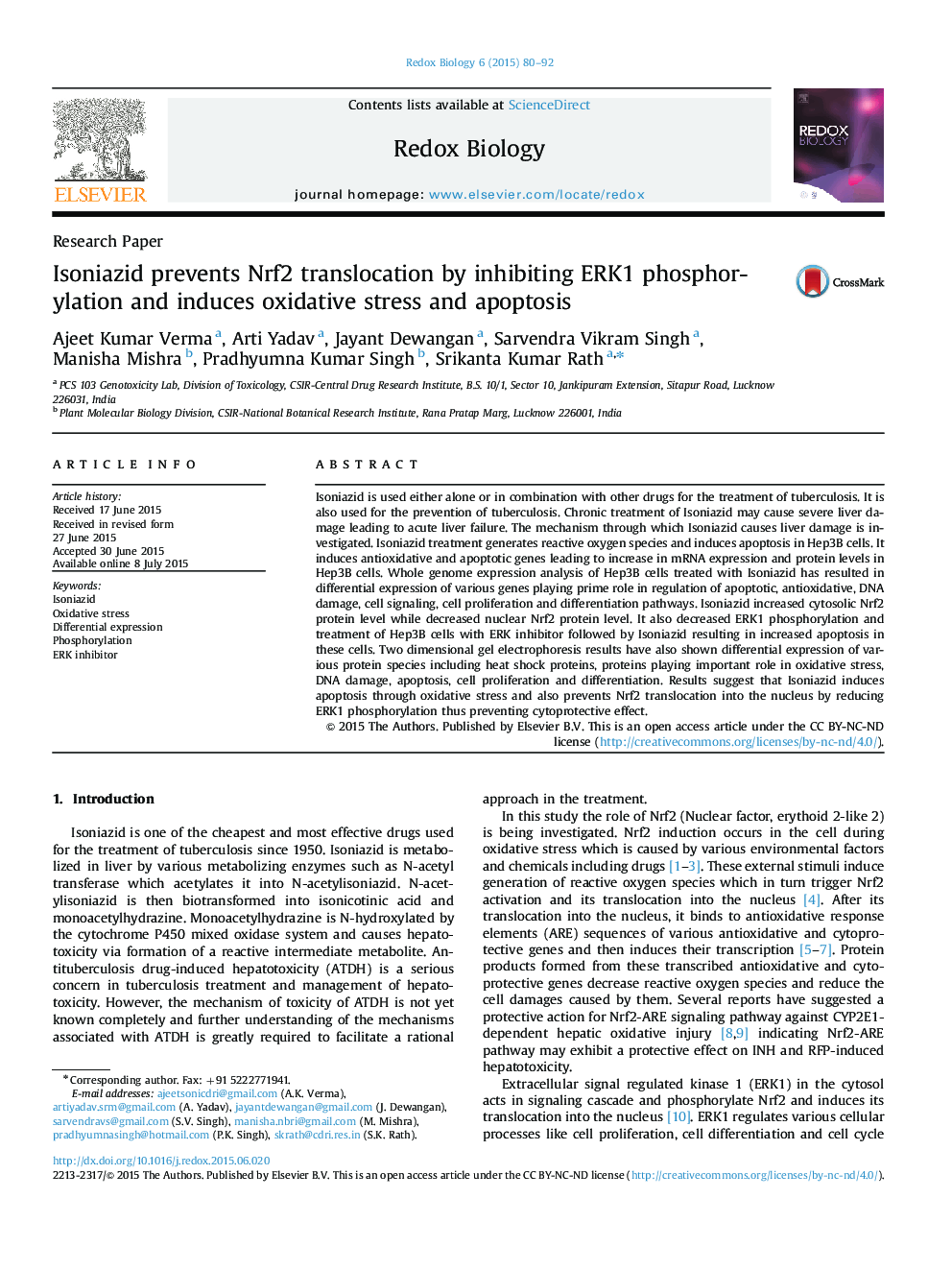| کد مقاله | کد نشریه | سال انتشار | مقاله انگلیسی | نسخه تمام متن |
|---|---|---|---|---|
| 1922917 | 1535844 | 2015 | 13 صفحه PDF | دانلود رایگان |

• Isoniazid generates ROS and induces apoptosis in Hep3B cells.
• Isoniazid resulted in differential expression of various genes playing prime role in various biological pathways.
• Isoniazid decreased phosphorylation of ERK1 into phospho-ERK1 as a result of which Nrf2 phosphorylation was inhibited.
• Nrf2 might not be able to translocate into the nucleus.
Isoniazid is used either alone or in combination with other drugs for the treatment of tuberculosis. It is also used for the prevention of tuberculosis. Chronic treatment of Isoniazid may cause severe liver damage leading to acute liver failure. The mechanism through which Isoniazid causes liver damage is investigated. Isoniazid treatment generates reactive oxygen species and induces apoptosis in Hep3B cells. It induces antioxidative and apoptotic genes leading to increase in mRNA expression and protein levels in Hep3B cells. Whole genome expression analysis of Hep3B cells treated with Isoniazid has resulted in differential expression of various genes playing prime role in regulation of apoptotic, antioxidative, DNA damage, cell signaling, cell proliferation and differentiation pathways. Isoniazid increased cytosolic Nrf2 protein level while decreased nuclear Nrf2 protein level. It also decreased ERK1 phosphorylation and treatment of Hep3B cells with ERK inhibitor followed by Isoniazid resulting in increased apoptosis in these cells. Two dimensional gel electrophoresis results have also shown differential expression of various protein species including heat shock proteins, proteins playing important role in oxidative stress, DNA damage, apoptosis, cell proliferation and differentiation. Results suggest that Isoniazid induces apoptosis through oxidative stress and also prevents Nrf2 translocation into the nucleus by reducing ERK1 phosphorylation thus preventing cytoprotective effect.
Figure optionsDownload as PowerPoint slide
Journal: Redox Biology - Volume 6, December 2015, Pages 80–92